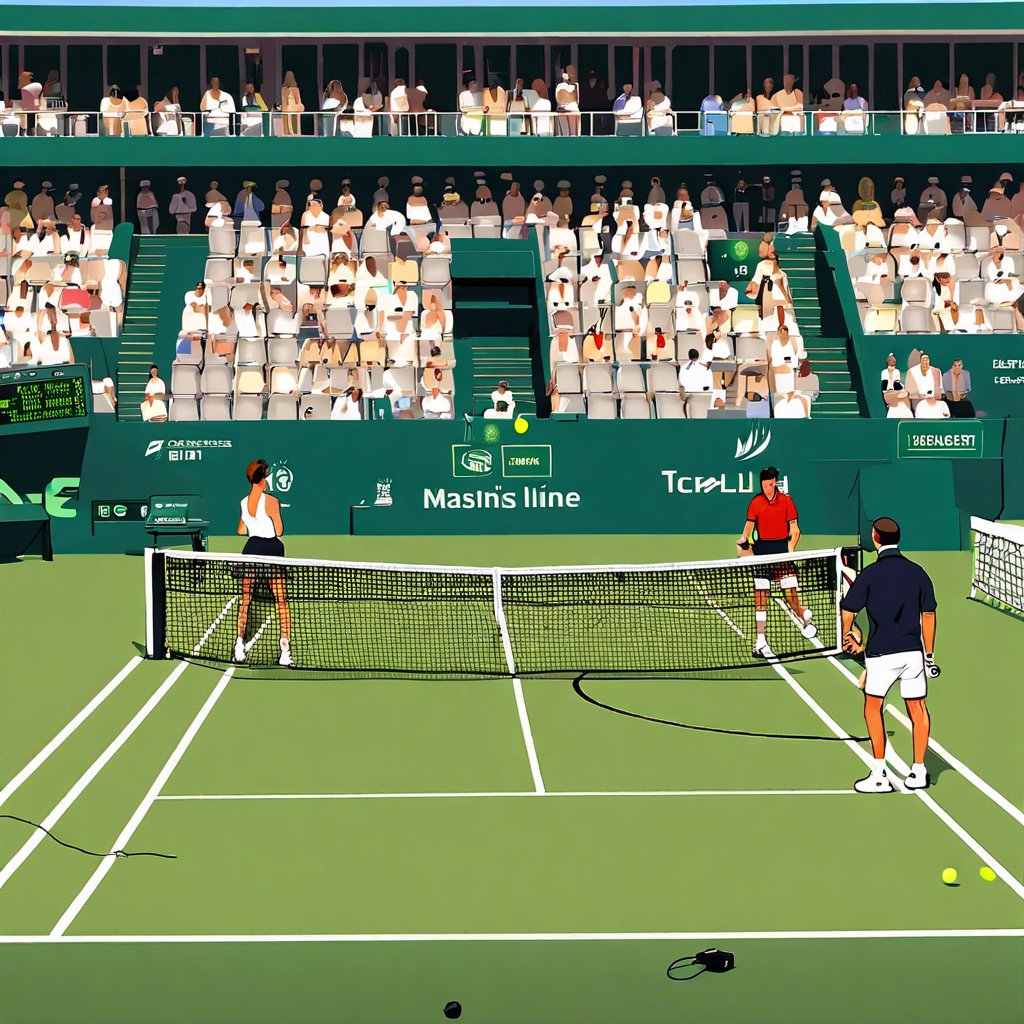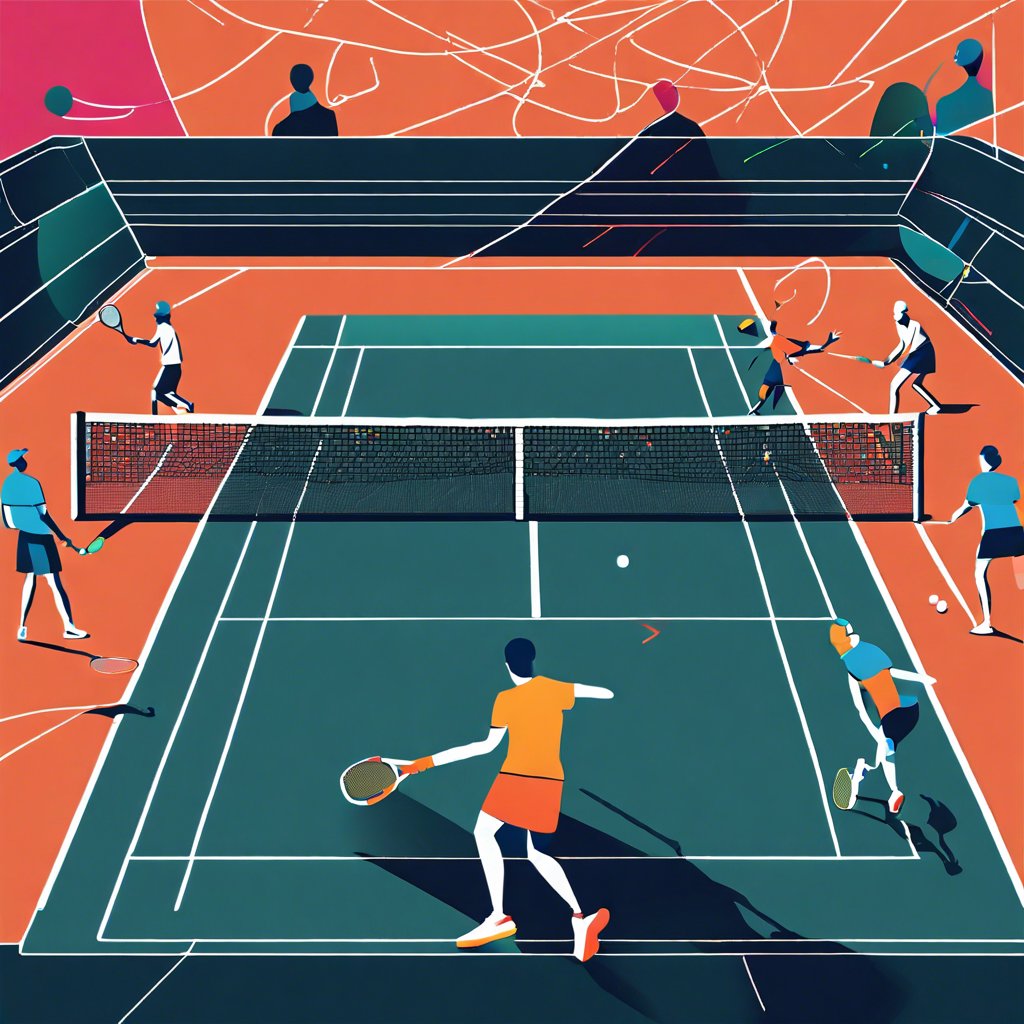Electronic Line Calling (ELC) and Its Controversies in Tennis
Starting in 2025, all ATP Tour-level events will implement Electronic Line Calling (ELC), a move aimed at completely eliminating human error in line calls. However, a recent incident at the Cincinnati Open raised questions about the reliability of this technology and the rules surrounding it.
In a gripping first-round match on Tuesday night between American players Taylor Fritz and Brandon Nakashima, the ELC system malfunctioned, reminding everyone that even in a world without line judges and the ability to challenge calls, errors can still occur.
Fritz, currently ranked No. 12 in the world, expressed his disbelief at having to advocate for himself in an era where technology is supposed to assist in officiating. This sentiment echoes that of Coco Gauff, who recently stated, “I always have to advocate for myself,” after feeling wronged by an umpire’s decision at the Olympics.
During the match, Nakashima was serving at 2-3, 30-30 in the second set when he hit a forehand that appeared clearly out of bounds. This would have put him down 30-40, facing a critical break point. However, the ELC system failed to register an “out” call. With no official ruling, play continued, despite Fritz looking up, signaling he believed the ball was out. The rally progressed for several more shots until a recording triggered by a review official interrupted the match, stating, “stop, stop, stop.”
This interruption was not an immediate response from umpire Greg Allensworth but rather a system-generated alert acknowledging the error. As chaos ensued in the middle of the rally, Allensworth called a let, explaining to Fritz that players are expected to halt play if they believe a ball is out, which Fritz found infuriating. “OK, no wait, no no no no. Don’t tell me that I need to stop the point when we have electronic line calling,” Fritz exclaimed.
After the match, Fritz took to social media, tweeting: “Imagine telling me I needed to stop the point when we have literal Hawkeye electronic line calling.” He pressed Allensworth on why the umpire hadn’t intervened when it was so clear that the ball was out. Allensworth admitted, “For me, I thought it was out, too. But I can’t do that (overrule the technology).” He ultimately announced to the crowd, “Due to a technical error, we will replay the point — 30-30,” prompting boos from the audience as the television coverage displayed the significant distance the ball was out.
Fritz voiced his frustration: “It’s actually ridiculous. That’s the craziest thing I’ve ever seen.” The incident sparked reactions from former and current players alike. Andy Roddick tweeted, “This is allergic to common sense,” while Daniil Medvedev chimed in on Instagram, stating, “Ridiculous decision… ball is out, point is over, point to Fritz. How was this not the outcome?”
The ATP rulebook specifies: “If the live ELC system fails to make a call, the call shall be made by the chair umpire. If the chair umpire is unable to determine if the ball was in or out, then the point shall be replayed. This protocol applies only to point-ending shots or in the case when a player stops play.” Furthermore, it states, “In the case where there is no call and the player stops play, the umpire shall call for the shot to be displayed on the video board for confirmation.”
Though Allensworth adhered to these regulations, they seem to diverge from what players and spectators expect in terms of common sense. This situation highlights the paradoxes inherent in the application of ELC, echoing other contentious officiating practices in tennis. For instance, during the French Open, umpires often descend from their chairs to inspect marks on close calls instead of utilizing Hawk-Eye technology. A notable incident occurred during this year’s French Open men’s final when Alexander Zverev was adversely affected by an overrule against Carlos Alcaraz at a pivotal moment in the fifth set, despite video evidence suggesting the original line judge’s call should have stood.
Similarly, Coco Gauff experienced frustration over umpire overrulings during both the French Open and the Olympics, where she lost points despite her belief that her swing was unaffected by the “out” calls. ELC, while intended to reduce such controversies, still suffers from its own limitations, as evidenced by the events of Tuesday night.
(Top photo: Dylan Buell/Getty Images)















